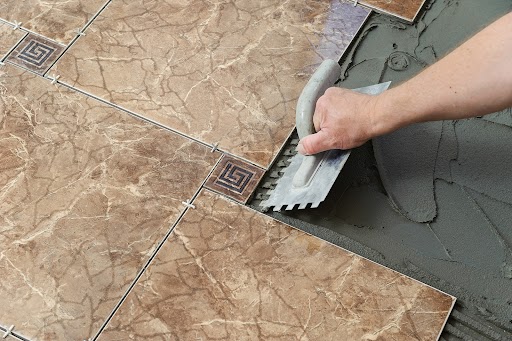Home renovation is just about the most exciting thing you could do. The thrill of choosing new screed wall designs when you’re bored of basic walls, upgrading your interiors, and turning your HDB flat into your dream home is unmatched. But before you get too carried away with tile samples and mood boards, there’s something equally important to consider – HDB’s renovation rules.
HDB has strict guidelines in place to ensure renovations are safe, compliant, and do not disrupt the building’s structure. If you plan to retile your floors, you need to be aware of these regulations to avoid unnecessary fines, delays, or rectification orders. Here’s everything you need to know before starting your floor tiling project.
Understanding HDB’s floor tiling regulations
HDB has established comprehensive guidelines to oversee renovation works, particularly concerning floor tiling. These rules are designed to ensure safety, preserve the building’s structural integrity, and minimise disturbances to neighbours. Key considerations include:
1. Three-year restriction on wet areas
For a period of three years from the issuance of the Temporary Occupation Permit (TOP), homeowners are prohibited from replacing the floor and wall tiles in wet areas such as bathrooms and balconies. This restriction is in place to protect the waterproofing membrane beneath the tiles, preventing potential water leakage to lower units. However, during this period, homeowners may overlay new floor finishes on existing tiles using adhesives, provided they comply with HDB’s guidelines.
2. Thickness limitations
When installing new floor finishes, the combined thickness of the floor finish and screed must not exceed 50mm. This limitation ensures that the additional weight does not compromise the building’s structural integrity.
3. Waterproofing measures
In areas like bathrooms and toilets, it’s mandatory to apply pre-packed waterproofing screed and a waterproofing membrane before laying new floor finishes. The membrane should extend at least 150mm up the walls and kerbs to effectively prevent water seepage.
4. Overlaying existing tiles
If you choose to lay new tiles over existing ones using adhesive, ensure that only one layer of existing floor finishes is present. The total thickness, including adhesive, must not exceed 13mm. Additionally, this method should not involve tampering with floor traps or result in backflow or lateral seepage into adjacent rooms.
5. Use of pre-packed screed
Since 1 June 2015, HDB has mandated the use of pre-packed screed for ‘dry areas’ when laying new floor finishes. This requirement ensures consistency in the quality and application of the screed, contributing to the durability of the flooring.
Permit requirements for floor tiling works
Not all floor tiling works require a renovation permit from HDB. However, certain conditions necessitate official approval:
- Replacement after three years
If you plan to replace existing bathroom or toilet floor finishes after the initial three-year restriction period, you must obtain a permit. This process ensures that all necessary precautions, especially regarding waterproofing, are adequately addressed.
- Topping up flooring
Any work involving the topping up of flooring using lightweight screed or blocks in areas like balconies, kitchens, bathrooms, or toilets requires a permit. This measure ensures that the modifications do not adversely affect the building’s structure.
Application process for renovation works
When a permit is required, the application process involves several steps:
- Preparation of documentation: Gather all necessary documents, including detailed renovation plans and specifications.
- Submission via HDB InfoWEB: Submit your application through HDB’s e-services portal. While homeowners can handle this submission, it’s often more efficient to have the HDB-registered contractor manage it, given their familiarity with the process.
- Compliance with guidelines: Ensure that all proposed works adhere strictly to HDB’s guidelines, particularly concerning structural and safety standards.
- Approval timeline: The approval process typically takes between two to four weeks. It’s advisable to factor this timeframe into your renovation schedule to avoid delays.
Approved floor tiling materials
To ensure durability and safety, HDB has approved specific flooring materials:
- Ceramic and porcelain tiles – Popular for their affordability and durability.
- Homogeneous tiles – Highly resistant to wear and scratches.
- Marble and granite – A luxurious choice but requires regular maintenance.
- Vinyl flooring – An easy-to-maintain alternative that provides a sleek look.
Tiling work dos and don’ts
Before proceeding with tiling, keep these dos and don’ts in mind:
Do:
- Hire only HDB-approved contractors to carry out tiling works.
- Use non-slip tiles in wet areas like kitchens and bathrooms for safety.
- Ensure that the floor level is uniform across different rooms to prevent tripping hazards.
Don’t:
- Cover floor traps permanently, as they must be accessible for maintenance.
- Install excessively thick tiles that exceed the allowable floor height.
- Ignore waterproofing rules in wet areas – proper waterproofing is essential to prevent leaks.
Responsibilities of homeowners
As a homeowner, you bear the ultimate responsibility for ensuring that all renovations comply with HDB’s guidelines. This responsibility includes:
- Supervision of works: Regularly monitor the renovation works to ensure they align with approved plans and standards.
- Communication with neighbours: Inform your neighbours about the renovation schedule, especially if the works are likely to cause noise or other disturbances.
- Adherence to working hours: General renovation works are permitted between 8:00 am and 6:00 pm daily. Noisy renovations, such as demolition or drilling, are restricted to weekdays from 9:00 am to 5:00 pm.
What happens if you don’t follow HDB rules?
Non-compliance with HDB’s renovation guidelines can lead to significant repercussions:
- Fines – Offences can result in fines of up to $5,000.
- Rectification orders – Homeowners may be required to undo or rectify non-compliant works at their own expense.
- Legal action – In severe cases, legal proceedings may be initiated, leading to further penalties.
To avoid these outcomes, it’s imperative to adhere strictly to HDB’s renovation guidelines and ensure that all works are compliant.
Conclusion
Embarking on a floor tiling renovation in your HDB flat can significantly enhance your living space’s comfort and aesthetic appeal. However, it’s crucial to navigate the process with a thorough understanding of HDB’s regulations to ensure a smooth and compliant renovation journey.
At Leong Yik Engineering & Contractor Pte Ltd, we specialise in guiding homeowners through the intricacies of HDB renovations. Our expertise ensures that your floor tiling project adheres to all necessary guidelines, providing you with peace of mind and a beautifully renovated home. Contact us today to discuss how we can assist you in transforming your living space while ensuring full compliance with HDB regulations.

